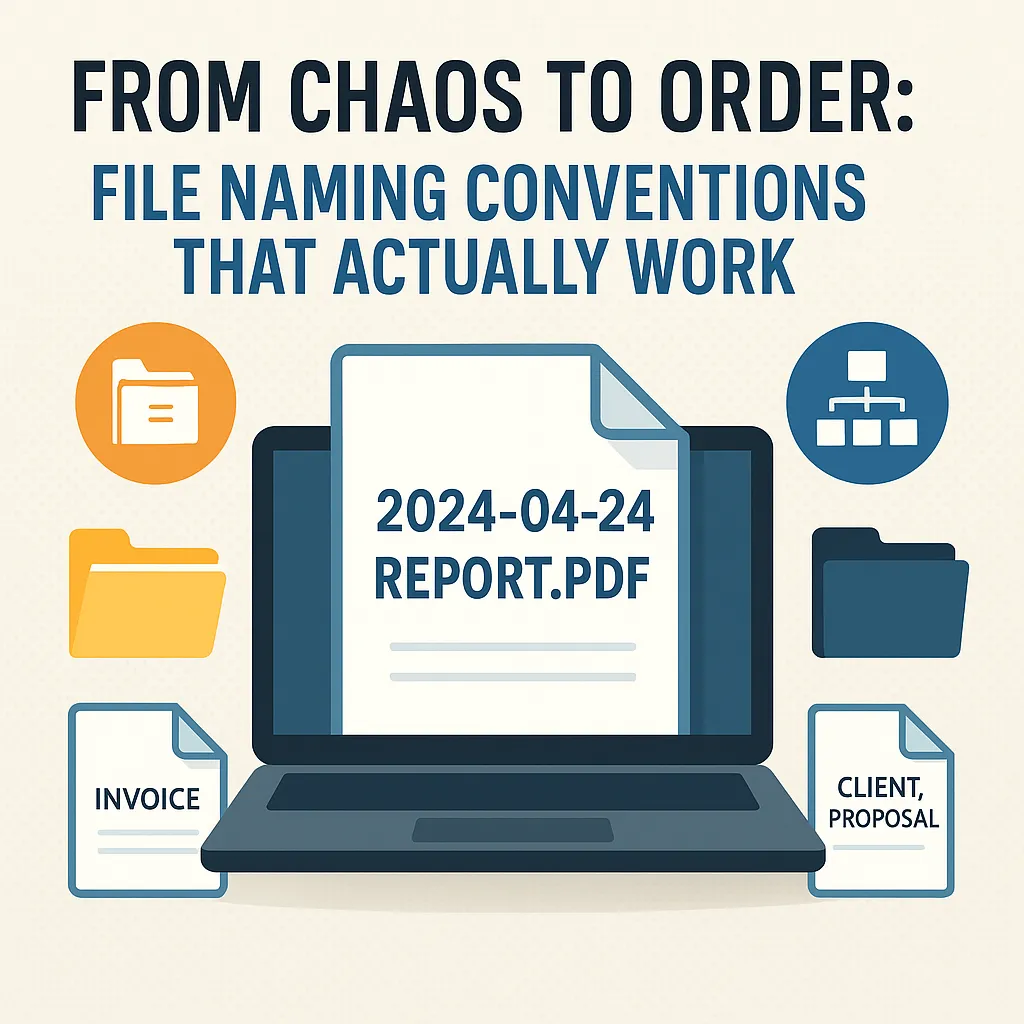
From Chaos to Order: File Naming Conventions That Actually Work
By: USA IMAGING, Inc.
When it comes to document scanning and digital file management, the process doesn’t end once the papers are digitized. In fact, that’s just the beginning. One of the biggest challenges organizations face after scanning their records is figuring out how to actually find and use those digital files months—or years—later. And the secret to success? File naming conventions and folder structures that make sense.
At USA IMAGING, we’ve seen it all—files dumped into a single folder labeled “Scan,” documents named “Doc1, Doc2, Doc3,” or even worse, scanned images with nothing but cryptic numbers generated by a machine. This approach may get the files into digital format, but it doesn’t make them useful. Without a clear system, it’s just digital clutter replacing physical clutter.
Why File Naming Conventions Matter
Imagine trying to track down a patient’s chart, a client contract, or an engineering drawing without knowing how the file was named. You’d waste valuable time—and time is money. A well-thought-out file naming convention not only saves time but also:
Supports consistency across your entire organization
Prevents duplication of files with vague or duplicate names
Improves collaboration, making it easier for teams to find what they need
Future-proofs your records, ensuring accessibility even years down the line
Practical Strategies for Naming Files
The best approach is to start simple and build from there. Here are some practical strategies we recommend:
Mirror Existing Organization
If your physical files are in alphabetical folders by client name, replicate that in your digital system. Familiarity makes the transition smoother.Use Key Identifiers
Incorporate elements like client name, project ID, or date. Example:SmithContract_2025-08-16.pdf.Be Consistent With Dates
Always format dates the same way—YYYY-MM-DDworks best for sorting.Keep It Short but Clear
Avoid long file names, but don’t be so vague that the file is unrecognizable. Balance is key.Don’t Forget Folder Structures
A clean hierarchy matters. Think of your folders like digital filing cabinets—main drawers, sub-folders, and labeled categories.
The Role of Metadata and Indexing
Beyond just names and folders, modern PDF files allow metadata and indexing to supercharge search. Think of it like adding searchable “tags” behind the scenes—client names, case numbers, or invoice dates. With proper indexing, you can type a keyword into a search box and instantly pull up the right file—even if you forgot the exact file name.
The Payoff: From Chaos to Efficiency
When businesses take the time to set up a smart file naming and folder structure strategy, the payoff is huge. Staff spend less time hunting for documents, compliance becomes easier, and productivity skyrockets. Instead of replacing physical clutter with digital chaos, you finally achieve what document scanning is supposed to deliver: efficiency, organization, and peace of mind.
At USA IMAGING, we not only scan your records—we help you design naming conventions and indexing strategies tailored to your business. Because scanning without structure isn’t organization—it’s just storage.
Contact us: 858-513-6565 or request a quote.
